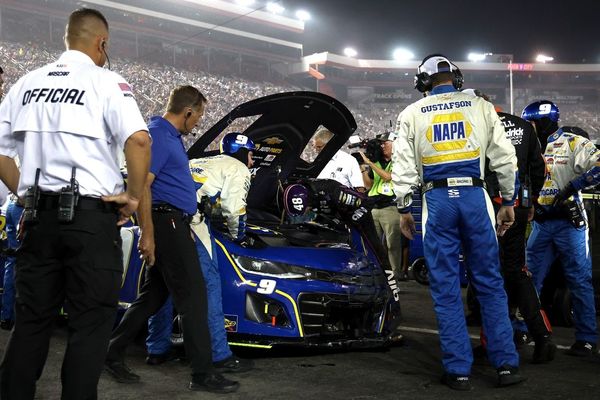Uber Technologies early Wednesday posted first-quarter earnings ahead of expectations and offered a stronger-than-expected sales outlook. But Uber stock fell as the ride-hailing and food-delivery company's Q1 revenue came in slightly below Wall Street forecasts.
Still, Uber Chief Executive Dara Khosrowshahi told analysts on a conference call early Wednesday that "each component of our multiyear growth framework is humming," with "robust, healthy growth" across customer metrics.
Khosrowshahi delivered that message after the San Francisco-based Uber published its Q1 report showing it swung to a profit of 83 cents per share, compared to a loss of 32 cents per share for the same period year earlier. That beat expectations for earnings of 51 cents per share, according to FactSet.
Sales grew 14% year-over-year to $11.53 billion. But that was a miss compared to the $11.63 billion analysts were forecasting ahead of the report, according to FactSet. Gross bookings on Uber's app climbed 14% year-over-year to $42.8 billion, compared to expectations of $43.1 billion, according to FactSet.
However, Uber gave an upbeat outlook for the current June-ending quarter. Uber told investors it expects Q2 gross bookings of $46.5 billion, at the midpoint of its given range. That was better than the $45.8 billion that Wall Street was forecasting prior to the report.
On the stock market today, Uber stock was down more than 2% at 83.92 in recent trades.
Uber Q1 By The Numbers
Trips on Uber's platform increased 18% year-over-year to 3 billion in the first quarter of 2025. There were 170 million users for Uber's app during the period, a 14% increase from a year earlier.
The miss for Uber's total bookings came within its mobility segment, referring to rides hailed from Uber's app. Mobility bookings grew 13% to $21.18 billion for the March quarter, below previous estimates of $21.5 billion.
Delivery bookings – which include food and grocery orders – increased 15% to $20.38 billion, compared to estimates of $20.28 billion.
Meanwhile, Uber's adjusted EBITDA (earnings before interest, taxes, depreciation and amortization) increased 35% to $1.87 billion. That beat expectations for $1.85 billion in adjusted EBITDA, which is a preferred profitability metric for Uber among Wall Street analysts.
Uber also projected $2.07 billion in adjusted EBITDA for Q2, ahead of the $2.04 billion forecast by analysts ahead of the report.
Uber's Robotaxi Push
Meanwhile, Khosrowshahi said the roughly 100 Waymo cars available through Uber in Austin have been "exceptionally utilized." Uber started offering Waymo's autonomous vehicles in the Texas capital city in March, part of a growing partnership with the Google-backed AV developer.
Uber stock slumped late last year, driven by fears that autonomous vehicles from Waymo and a forthcoming robotaxi from Tesla could chip away at Uber's lead in the app-based rides market.
This year, Uber has moved rapidly to answer those concerns by partnering with AV developers to add robotaxis to its app.
Uber is also partnered with Waymo in Phoenix, with an Atlanta partnership launching soon. Uber also has announced partnerships with other AV developers as well, including Pony AI, WeRide, May Mobility, Volkswagen and Avride, which is part of Nebius Group.
Uber Stock Rebounds
Uber shares were ahead 42% this year entering Wednesday's trading, compared to a 4.7% year-to-date loss for the S&P 500. Uber is nearing its October peak at 87.
IBD Market Surge charts show Uber sitting on a four-week rally, including a breakout from a cup base with an 82.10 buy point. The base formed within a larger consolidation.
Coming into the report, Uber stock had an IBD Composite Rating of 96 out of a best-possible 99, according to IBD Stock Checkup. The score combines five separate proprietary ratings into one rating. The best growth stocks have a Composite Rating of 90 or better.
UBER stock has a 21-day ATR of 4.65%.
The average true range is a metric available on IBD's MarketSurge charting tool. It gauges the characteristic breadth of a stock's behavior. Stocks that tend to make large jumps or dives in daily action, the kind that can trigger sell rules and shake investors out of a stock, have a high ATR. Stocks that tend to make more incremental moves have lower ATRs.
There are exceptions, but given current market conditions, IBD generally suggests investors keep most of their portfolio focused on stocks with ATRs at or below 6%.







